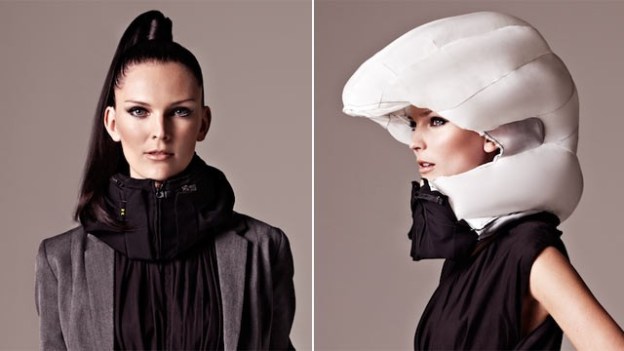
Helmet hair. We’ve seen it, experienced it, and collectively despise it. No matter how well-designed a helmet is, if it wraps around your scalp, it’s bound to restrict your hair from its natural, airy shape.
Swedish industrial design students Anna Haupt and Terese Alstin decided the solution would be to not cover your hair with anything at all, all while still providing the protection of a helmet. The duo accomplishes this by creating the Hövding invisible helmet. At a glance, the “helmet” looks more like a collar or an oversized scarf, but it draws inspiration from a traditional car airbag which only inflates upon impact.

These movement patterns were collected from a study of stunt drivers and crash dummies to identify common head movements and speeds. Once triggered, gas generators fill up the helmet within 0.1 second, surrounding the wearer in a space-like headgear. The Hövding also comes with LED lights to indicate battery levels for the internal software that saves speeding data to help Haupt and Alstin collect more information for future productions. To recharge, users simply plug the collar into an USB port.
Of course, there are other risk factors to take into consideration with the openness of this design. Not all bicycle and motorcycle accidents occur from just vehicle crashes; If cyclists aren’t paying attention, they can easily run into low-hanging street signs or other speeding obstacles. What if the helmet accidentally deploys after sensing sudden breaks that often don’t result in injuries? At the current price tag of €400, or $520 USD, the Hövding invisible helmet is an expensive alternative to traditional helmets – especially when you consider its one-time use appeal. Is all this worth a stylish accessory and keeping your hair neat?
Knowing the issues at hand, Haupt and Alstin are working to change some electronic designs to help lower production costs. They also aim to offer more collar colors and patterns to make it fashionable and encourage safety gear. It may not be the best solution to helmet hair meets utmost protection, but it’s a start at where everyday objects can start becoming smart enough to defend us in real-time.


